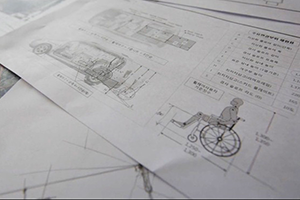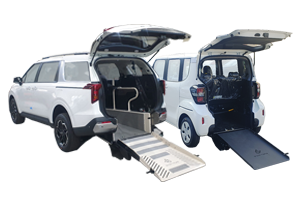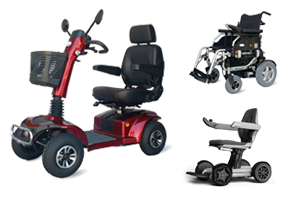You'll Be Unable To Guess Infant Car Seat Uk's Secrets
페이지 정보

본문
 Choosing an Infant Car Seat in the UK
Choosing an Infant Car Seat in the UKCar seat laws in the UK require all children to use a car seat for children until they reach a certain age or height. It is essential to choose the correct car seat to ensure your child's safety.
This rear-facing car seat is described as one of the best car seat by the consumer advocate Which? It comes with a baby-hugging insert and also an enhanced G-Cell defense against side-impacts. It also comes with a rotation function that lets you adjust the seat to the optimum position for your vehicle.
Rear-facing
Car seats with rear-facing windows for infants are designed to shield babies from head and neck injuries that can occur during a crash. Children who ride forward-facing in car seats are seven-times more likely to suffer serious injuries than those who ride rear-facing. Car seats that are rear-facing for infants are typically placed on the back seat, and are smaller and lighter than convertible child safety seats. It is recommended that you always use the rear-facing infant car seat until your child has outgrown it, or attains the weight or height limits for forward-facing use.
There are two kinds: convertible car seats and all-in-one car seats. Both are safe for your baby, but each has its own advantages and disadvantages. Convertible car seats are facing the rear and can be turned to face forward when your child is old enough. All-in-one car seats feature higher rearward-facing weight and size limits to ensure that your child can enjoy a longer time in the seat.
Be sure that the rear-facing car seats you pick for your baby are suitable for your vehicle and are properly installed. Review the manufacturer's label and your owner's manual for directions on how to properly install the seat. Also, examine the harness to make sure it's snug and secure, and also ensure your child isn't able to pinch a fold in the harness. Avoid wearing clothing that is bulky and can interfere with straps.
Rear-facing car seats are more secure than car seats that face forward facing infant car seat for babies, because the force of a crash is lessened when the infant's body is in the seat. Car seats that face the rear offer better protection for infants ejected in a side-impact accident.
If your child outgrows their rear-facing infant car seat you might want to think about switching to a seat that has a high rearward-facing weight and a size limit. A majority of convertible car seats come with rear-facing limits that allow your child to use the seat for more than two years.
Forward-facing
You can flip your baby to face forward when they outgrow the rear-facing infant seat. It is best to wait until your child has reached the weight and height limits before you do this. It is also advisable to talk with your child's pediatrician.
Physics' laws and safety research have demonstrated that children under two years old are safer if they are in a rear-facing car seat. They will be able to relax more comfortably in their seat and are less likely to be injured by the belt or airbag. This is particularly important for babies, whose bones and necks are still developing. According to the i-Size guidelines, toddlers and infants must ride rear-facing for a minimum of 12 months or 20 lbs. Some experts recommend waiting even longer.
If your child gets out of the rear-facing car seat it is possible to switch them to a car seat that is convertible or comes with five-point safety harness. These seats are designed to fit your growing child, and a lot include an infant positioner that can be removed. These seats come with a base so that they can be used on multiple vehicles. You can also buy additional bases if your vehicle has more than one.
For children weighing up to 20 pounds, it is also recommended that the car seat has a headrest. The headrest should be angled slightly back but not more than 300 degrees vertical, and should cover the baby's ears. If the headrest isn't properly angled it could entrap the baby's airway. The car seat should not be set in a way that can cause a herniated disk in the spine.
In the event of a crash it is possible for children to fall out of the car seat facing forward. This could be fatal. A rolled up towel or pillow can be tucked under the seat's base to help it recline more, and this will keep your child safe in the car.
A rear-facing car seats can reduce leg injuries during collisions. In a frontal crash, the legs of a child who is facing forward could fly up and strike the back of the seat, which could cause severe injury. However, with a rear-facing car seat, the child's legs will not strike the seat but will be cushioned by the harness. This will lower the risk of injuries.
Multi-group
There are a variety of options for infant car seats. However, not all will suit your baby's needs. A multi-group infant car seat travel car seat is one that will accommodate your child from birth to around the age of four and can be used with nearly any pram. This type of car seat comes with a harness that is designed to protect your child. It's designed to grow with it, with features such as an adjustable headrest or side impact wings. Some of these seats are also designed to be able to rotate inside the vehicle and allow you to change their position to give your child a better view of the road ahead.
New infant car seats are designed to be based on height, not weight, which makes them safer for your child. This type of car seat, known as i-Size or R129 is approved by the EU in the UK and all of them must meet strict safety regulations to be sold. The seat will be branded with a label that shows an 'E' capitalized in a circle, and the letters "R129". These seats are easy to put in and offer greater protection against side impacts.
The Group 0+ or 1 car seat is designed to face rearwards until your child weighs at minimum 9kg. After that they can be rotated to face forward. They have a harness, and are secured with either Isofix or the car seatbelt. Some of them will have an option for rotation which means you can move the car seat around without using the car belt. Some of them can be used onto most prams.
A group 1/2/3 seat can keep your child safe until they reach the age of 11 and are 105cm tall, or until you decide to convert it into a booster. These are the most secure car seats, and are recommended by Which?. They come with a wide design with a recline feature that is one-handed and more than 12 headrest positions. Some of them are designed for travel, and come with a light carry handle that's designed to easily fit into a suitcase.
Rotation function
The ability to rotate the infant car seat is among its most prominent features. This feature permits the part of a car seat that holds the child to rotate on a separate platform making it easier for the parents to carry their child into and out of the car. This feature is particularly useful when the trunk of the car or backseat are compact. It can also make it easier to install a seat into another vehicle.
It's also much easier to reach the buckles on the harness without disturbing a sleeping baby. This is a great benefit for parents who are trying to manage toddlers and trying to get them in the car. Some rotating seats are not equipped to accomplish this. It is worth reading online reviews for specific models to find out how well they perform.
Another important feature to consider is whether the seat is compatible with a stroller. There are many brands that offer this combination, which is known as a travel infant car seat system and is ideal for parents who are looking for a single unit that can guide them through all stages of their child's life. It's an excellent option for families who have multiple cars and can easily switch between them without disturbing their baby.
Infant car seats are designed to be used by babies and infants up to one year of age. They are divided into four groups which are Group 0, 1, 2, and 3. The Group 0 car seat, also known as infant car seat uk (the original source) seats or carrycots, keeps the child facing backwards and is attached to the vehicle using the standard seatbelt or ISOFIX fitting. The Group 1 infant car seat is typically connected to the base of the vehicle with the help of LATCH. This system connects all types of car seats.
 A group 3 car seat is usually a convertible car seat that grows with the child, starting from infant to around four years old. These seats come with an increased height and weight limit, as well as a padded, adjustable headrest to help protect the child from injuries in the event of a crash. They also have a support wedge that can be removed and a luxury carry handle, which means that the seat can also double as a carry-on.
A group 3 car seat is usually a convertible car seat that grows with the child, starting from infant to around four years old. These seats come with an increased height and weight limit, as well as a padded, adjustable headrest to help protect the child from injuries in the event of a crash. They also have a support wedge that can be removed and a luxury carry handle, which means that the seat can also double as a carry-on.- 이전글A Productive Rant About Fold Up Incline Treadmill 24.09.14
- 다음글You'll Never Guess This Car Remote Key Repair's Secrets 24.09.14
댓글목록
등록된 댓글이 없습니다.





